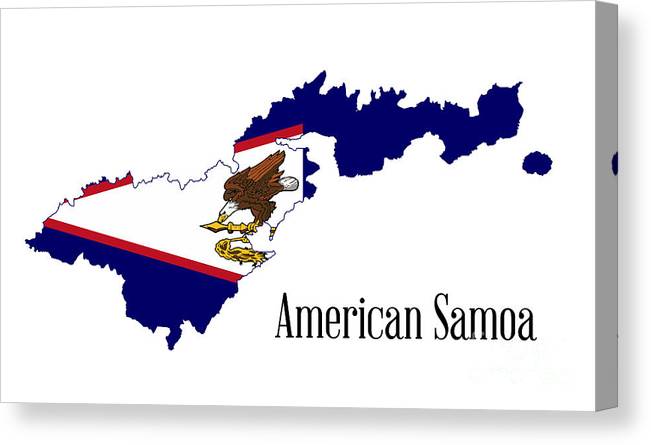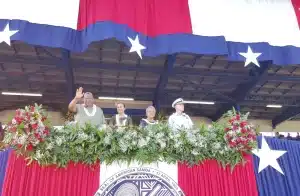Metro
American Samoa: A History of Colonialism, Conflict, and Culture

American Samoa is a group of islands in the South Pacific Ocean that are part of the Samoan archipelago. The islands were settled by Polynesians (probably from Tonga) about 1000 BCE and became a cultural and political center for eastern Polynesia by 500 CE. The islands were first visited by European explorers in the 18th century, and later by missionaries, traders, and whalers from Britain, Germany, and the United States. In 1878, the United States established a naval base on Pago Pago Bay on Tutuila Island, the largest and most populous island of American Samoa.
See population, official language and more…

In 1899, after a series of civil wars and conflicts among the Samoan factions and the foreign powers, Germany and the United States divided the Samoan islands between them in the Tripartite Convention. The eastern islands, including Tutuila, became American Samoa, while the western islands became German Samoa (later Western Samoa and now Samoa). In 1900, the United States formally annexed American Samoa as an unincorporated territory.
The local chiefs ceded their lands and authority to the United States in exchange for protection and recognition of their rights. In 1925, Swains Island, a coral atoll north of Tutuila, was added to American Samoa after being claimed by an American family since 1856. In 1940, American Samoa was attacked by Japanese planes during World War II, but no major damage was done. The islands served as a military base for the Allied forces in the Pacific theater. In 1951, American Samoa became a self-governing territory under the supervision of the U.S. Department of the Interior.
The first governor was appointed by the U.S. president, but since 1977, the governor has been elected by popular vote. In 1967, American Samoa adopted its own constitution and established a bicameral legislature and a judicial system. In 1981, American Samoa became an associate member of the Pacific Islands Forum, an intergovernmental organization of Pacific island countries. In 1986, American Samoa signed a covenant of free association with the United States, which grants U.S. citizenship to American Samoans and allows them to travel freely between the two countries.
However, American Samoans cannot vote in U.S. presidential elections or have full representation in Congress. The Polynesian settlers of Samoa developed a distinctive culture, language, and social system based on kinship, rank, and communal ownership of land and resources. They also established a political system of chiefs (matai) and councils (fono) that governed the affairs of the villages and districts.
The Samoans had frequent contacts and exchanges with other Polynesian islands, such as Tonga, Fiji, and Hawaii. They also developed a reputation for their seafaring skills and warrior prowess. They resisted foreign domination and maintained their independence for centuries. The first European to sight Samoa was the Dutch navigator Jacob Roggeveen in 1722. He was followed by other explorers, such as the Frenchmen Louis-Antoine de Bougainville in 1768 and Jean-François de La Pérouse in 1787, who named the islands the Navigator Islands. The first permanent European settlement in Samoa was established by British missionaries of the London Missionary Society in 1830 on Savai’i island.
They converted many Samoans to Christianity and introduced Western education, literacy, and trade. They also influenced the political and social structure of Samoa by supporting some chiefs over others. The United States became interested in Samoa in the 19th century for its strategic location and natural harbor. In 1839, an American explorer named Charles Wilkes visited Tutuila and negotiated a treaty of friendship with the local chiefs. In 1872, an American trader named John C. Williams bought land on Pago Pago Bay and built a coaling station for American ships. Germany also had commercial interests in Samoa since 1845, when a German trader named August Unshelm established a trading post on Upolu island. Germany later formed a partnership with a British company called J.C. Godeffroy & Son, which dominated the copra (dried coconut) trade in Samoa.
Germany also supported a rival faction of Samoan chiefs who opposed the influence of the missionaries and the United States. Britain also had a presence in Samoa since 1839, when a British consul was appointed to protect the interests of the missionaries and traders. Britain also claimed some islands in the Samoan archipelago, such as Manu’a and Swains Island. The conflicting interests of the foreign powers and the Samoan factions led to a series of civil wars and diplomatic crises in the late 19th century.
The most notable events were the First Samoan Civil War (1886–1894), the Samoan Crisis (1887–1889), and the Second Samoan Civil War (1898–1899). These wars involved naval battles, land skirmishes, assassinations, coups, and natural disasters. In 1899, after the death of King Malietoa Laupepa, who was supported by Britain and the United States, and the ascension of King Mata’afa Iosefo, who was supported by Germany, a peace conference was held in Berlin among Germany, Britain, and the United States.
The conference resulted in the Tripartite Convention of 1899, which divided the Samoan islands between Germany and the United States. Britain withdrew from Samoa in exchange for other territories in the Pacific. The eastern islands of Tutuila, Aunu’u, Ofu, Olosega, Ta’u, Rose Atoll, and Swains Island became American Samoa under the administration of the U.S. Navy. The western islands of Savai’i, Upolu, Manono, Apolima, Fanuatapu, Namu’a, Nu’ulopa, Nu’utele, Nu’ulua, Nu’usafee Island became German Samoa under the administration of a governor appointed by Berlin. In 1900, after a brief resistance by some local chiefs led by Chief Tui Manu’a Elisala on Ta’u island, American Samoa was formally annexed by the United States as an unincorporated territory. The local chiefs ceded their lands and authority to the United States in exchange for protection and recognition of their rights. The U.S. Navy established a naval station on Pago Pago Bay and appointed a naval officer as governor of American Samoa.





